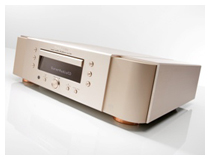Six AV formats that didn't deserve to die (and two that did)
Vinyl’s continuously undead state has been helped along the way, of course. First there was the DJ cult that flourished in clubs in the late 1980s and 1990s, where many a club classic made its debut on white label 12-inch singles. Those two decades also saw the rise of the indie singles club, where new releases were sent out to subscribers on scratchy 7-inchers.
The mainstream music biz then embraced vinyl again in the early noughties. This was out of necessity rather than invention - it found that by sending preview singles and albums to music papers and magazines on vinyl rather than CD, it took rather longer for ripped versions of those tracks to mysteriously appear on the internet.
The enduring quality of vinyl continues to make its presence felt today. Some of the world’s hottest bands still insist on releasing their new work on vinyl, and some enterprising labels are teaming the vinyl release with the MP3 version, so you don’t need to rip the songs yourself.
Vinyl also has a chic, retro appeal - the sheer physicality of putting taking a record out of its sleeve, putting it on your turntable and placing the needle down on the groove is a special moment.
It reinforces the bond between you and the music. It turns music into a special event - it asks that you listen, rather just treat music as a commodity. It stopt it being mere background noise to fill to the silence with.
And the joy of vinyl isn’t just confined to the old farts who nod sagely along to organ music at high-end hi-fi shows. Even the young are loving it, as a recent article in Wired proves.
And the two AV formats that deserved to die are...
Sign up for breaking news, reviews, opinion, top tech deals, and more.

Super Audio CD and DVD-Audio
The AV industry is all in a tizzy. Sony, Philips and friends have lined up on one side, Toshiba, Panasonic and co. are aligned on the other. Both are touting a new high definition format that promises to unseat the current and very loved incumbent.
Yup, in the 1990s the Sony / Philips Super Audio CD (SACD) format fought it out against Toshiba’s DVD-Audio for a tiny percentage of the high-end audio market that no-one in the mainstream really gave a stuff about. Superior sound quality? Pah. Have you heard about this thing called MP3?
In truth both formats had their merits, but multi-channel sound (it’s like quadrophonic, man) and the ability to display music and lyrics on your TV weren’t either of them.
Yes, the increased capacity of both formats (which used the DVD-Video format as their starting point) did result in better sound quality - but audiophiles knew they already had that with vinyl (whose rumours of death had been greatly exaggerated).
What was worse was that both Super Audio CD and DVD-Audio were festooned with DRM (marking the opening volleys of that particular battle) and had an audio catalogue conspicuous for its lack of almost anything resembling mainstream artists.
In Sony’s defence SACD at least tried to approach the mainstream with hybrid CD/SACD discs that played in ordinary CD players. But that also revealed SACD and DVD-Audio’s fatal flaw:
When push came to shove your average listener simply couldn’t tell the difference in sound quality between the new high resolution formats and regular CD, making the fierce battle between the two rival formats moot.
That’s a lesson Sony may yet learn to its cost with Blu-ray: superior sound and picture quality does not necessarily a successful format make.
Do you miss HD DVD, laserdisc and MiniDisc? Or so do you think they all deserved to die? Let us know, add your comments below!